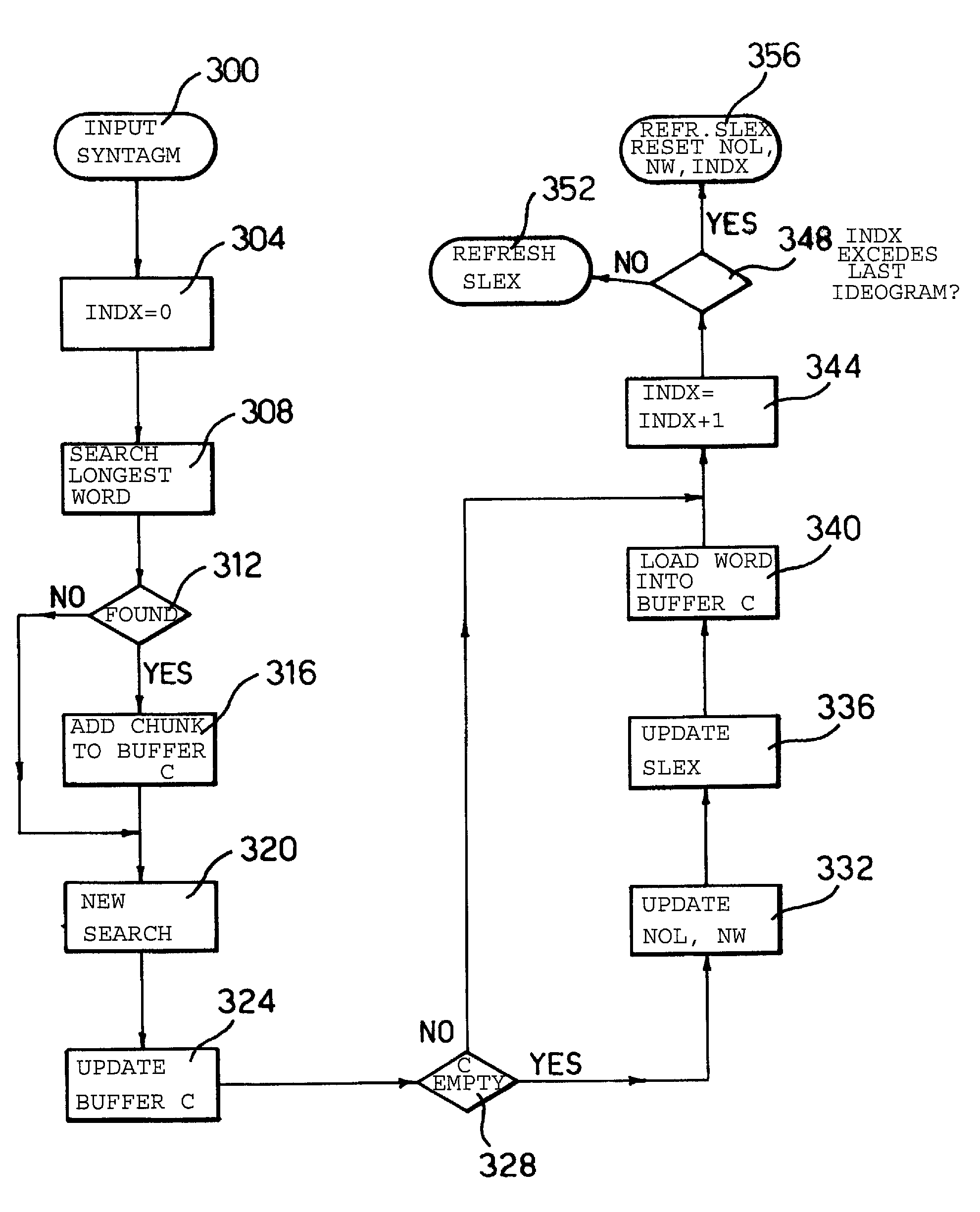Automatic segmentation of texts comprising chunks without separators
a text-to-speech synthesis and automatic segmentation technology, applied in the field of segmentation of texts in languages, can solve the problems of basic difficulty in writing the language, practical uselessness, and basic difficulty in developing systems for text-to-speech synthesis of chines
- Summary
- Abstract
- Description
- Claims
- Application Information
AI Technical Summary
Benefits of technology
Problems solved by technology
Method used
Image
Examples
Embodiment Construction
[0039]By way of introduction, a general description of the basic principles underlying the arrangement disclosed herein will be provided.
[0040]In brief, the text-to-speech synthesis arrangement disclosed herein is based on a lexical approach substantially related to the maximum matching approach.
[0041]As a first step the input text is subdivided into syntagms following some basic rules, where a syntagm is a portion of text, for example a sentence delimited by punctuation marks. Thereafter each syntagm is sent in its turn to the segmentation module.
[0042]More specifically, starting from the first ideogram (i.e. chunk) in the syntagm, “special” sequences corresponding to defined rules (such as dates, hours, and so on) are searched. If located, such sequences are allotted a defined cost.
[0043]Also the longest word of the lexicon starting with that ideogram is searched, then the second longest one, and so on by ending up with the ideogram itself.
[0044]Those words that are found in the l...
PUM
 Login to View More
Login to View More Abstract
Description
Claims
Application Information
 Login to View More
Login to View More - R&D
- Intellectual Property
- Life Sciences
- Materials
- Tech Scout
- Unparalleled Data Quality
- Higher Quality Content
- 60% Fewer Hallucinations
Browse by: Latest US Patents, China's latest patents, Technical Efficacy Thesaurus, Application Domain, Technology Topic, Popular Technical Reports.
© 2025 PatSnap. All rights reserved.Legal|Privacy policy|Modern Slavery Act Transparency Statement|Sitemap|About US| Contact US: help@patsnap.com



